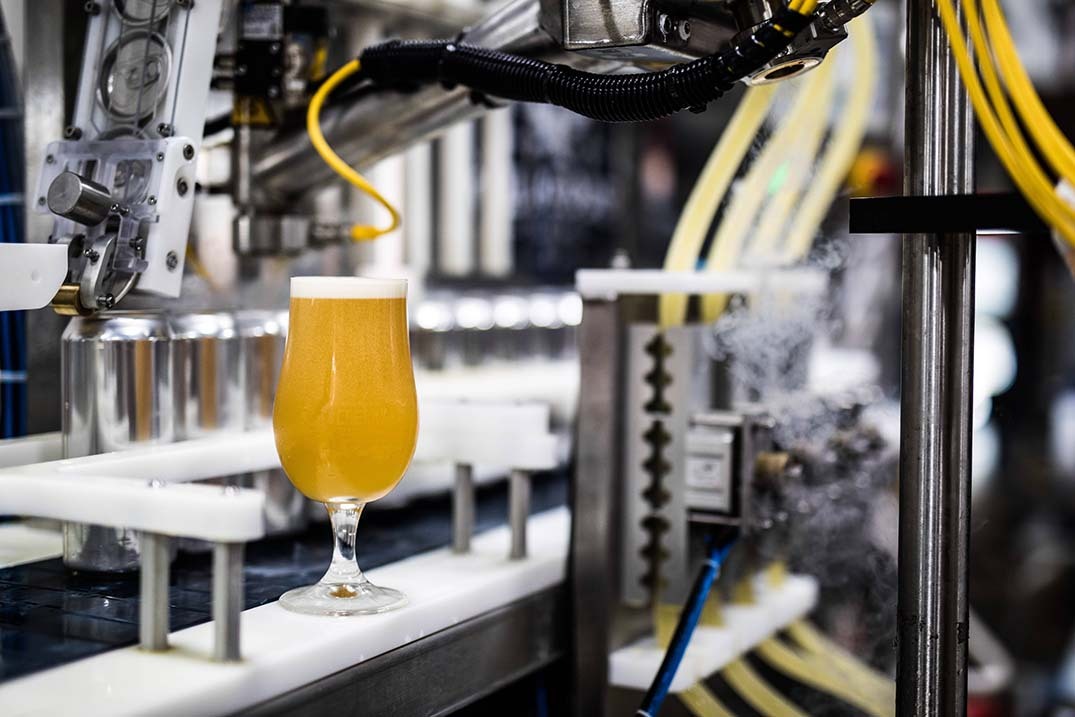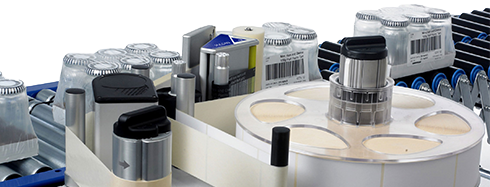Understanding secondary packaging within the beverage industry and future trends
29th May, 2019
The beverage industry is constantly evolving as it reacts to consumer trends and needs, including the rising popularity of NOLO drinks (non or low alcoholic). The UK manufactured £10.9 billion worth of beer, whiskey and soft drinks in 2017, and it is an incredibly competitive landscape with 240 major soft drink manufacturers alone. Therefore, those within the industry are looking for any advantage or edge that they can find. One such advantage can be found within secondary packaging – if a manufacturer can reliably package their beverage products at high speeds, it stands them in good stead to minimise downtime and waste.
Beverage production lines are notoriously fast paced, with small margins and a vast quantity of product flowing through the production line. Therefore, any issues with the secondary packaging which could lead to a slowing down of the production line, downtime, mistakes in packaging, or waste could potentially damage the bottom line of a beverage producer.
We look at the unique challenges faced by beverage producers with their secondary packaging today, and look to future trends and the potential impact they could have on drinks manufacturers.
If you would like to save the guide for future reference you can download a designed version here.
Secondary packaging waste within the beverage industry
Any beverage producer that has a turnover of over £2 million and handles over 50 tonnes of packaging a year has a legal responsibility to record and reduce their waste annually. This combined with the current consumer attention on sustainability, magnified by David Attenborough’s Blue Planet series, extinction rebellion, and Greta Thunberg’s protest has made sustainability a key area for beverage producers.

There have already been a number of incredibly innovative solutions originating from drinks manufacturers such as Carlsberg gluing their cans together with a recyclable substance, Corona using a plant based alternative to plastic and Radnor Hills introducing recyclable shrink wrap for its bottled water products.
However, more innovation is needed to confront this challenge if beverage producers are to meet both the government’s legal standards and consumer demands.
Human error within secondary packaging
Its 2019, with industry 4.0 and the smart factory leading to vast efficiency gains in some factories, yet many factories are still stuck in a bygone era, employing people to hand pack their drinks. There are obvious issues associated with this outdated practice.
- Human error – 60% of product recalls are caused by human error
- Salary expense – Simply put humans are expensive, with the recent rise in minimum wage likely to reduce company profits
- Lower migration – The political climate has reduced the number of EU migrant workers entering the country, which may make it harder to fill packaging roles
- Reliability – Humans take sick days, lose motivation, and their accuracy / consistency cannot be relied upon compared to robotics
Whilst robotics can be an expensive outlay in the short term, they can quickly pay for their price tag through increased speed, reliability, salary reduction and removing human errors and the associated waste.
For further analysis of the secondary packaging options and the pros and cons of each please read our guide.
High throughput of beverage products
Beer, whiskey and soft drinks alone account for nearly £11 billion of product manufactured each year in the UK. The vast quantity associated with the beverage industry dictates that the production lines will have a high throughput. One such example is the Coca Cola factory in Wakefield which produces 4,000 330ml cans and 3,200 PET bottles every minute from its nine production lines. The speed of these lines could potentially lead to engineering challenges of their own within secondary packaging such as lower quality of packaging, missed packs and overflow control.

It doesn’t matter if you have a production line geared up for 120 packages a minute, if part of your line can’t keep up – your line is only as good as the lowest common denominator.
Measuring downtime to increase profitability
Many in the beverage industry will be familiar with the razor-thin profit margins that are common place across the industry, with the average profit margin below 6% for beverage manufacturers in 2015. When working with such fine margins it is important to maximise the uptime of all your production line and to review potentially unreliable secondary packaging machines.
Rick Gessler, vice president of engineering and marketing at Delkor Systems, told Beverage Industry magazine:
“Beverage-makers have a greater need now more than ever for higher uptime and operating efficiency.
“Time is money when in a production plant and any lost time due to a machine being down or being changed over can be costly for a beverage business. That means end-of-line systems must be engineered to meet aggressive uptime requirements.”

In order to measure and improve uptime, many factories use the Overall Equipment Effectiveness (OEE) method – read our guide to understand all there is to know about OEE. However in order for this to be successful it requires accurate data and research has shown that as many as 80% of food and drink manufacturers could not reliably estimate the cost of their downtime.
Compounding this issue is the sheer cost of unplanned downtime, with the Aberdeen Group estimating it can be up to £199,417 an hour. The lack of accurate data within beverage production can make it impossible to pinpoint the problem areas causing the majority of downtime, whether it be in primary or secondary packaging. Making it difficult to improve the efficiency of your packaging line and ultimately increase the profitability of your factory.
Future of secondary packaging within the beverage industry
Whilst this guide has covered the key challenges that beverage production lines face today, the pressure of sustainability targets, changing consumer-demands and technological innovations means that beverage secondary packaging will continue to evolve.
Clearmark has cast its expert eye over the future trends and innovations that will likely impact secondary packaging within beverage production lines.
Automation within the beverage industry
Automation looks set to continue to be a key driver within factories, with research by Lockton showing that 95% of food and beverage manufacturers have already introduced or are considering additional automation in the manufacturing process to meet pricing pressures as factories change rapidly.
Secondary packaging sustainability
Modern consumers are increasingly interested in the environmental credentials of companies and this is reflected in the goods that they buy.
There is a growing emphasis on green packaging which is making secondary packaging made out of single use plastic increasingly hard to defend.
Therefore it is imperative that the beverage industry combats this issue if it is to continue to appeal to increasingly ethically-conscious consumers.
The rise of e-commerce and the last mile secondary packaging
E-commerce looks set to account for 20% of all food and beverage products sold in 2025, a colossal tenfold increase over 2016. This is likely to revolutionise secondary packaging, as it must evolve to be appropriate for the last mile delivery straight into consumers’ homes. This packaging will likely differ to traditional secondary packaging used to transport goods to brick and mortar stores; as the secondary packaging will now come into contact with consumers and also be responsible for the safe delivery of the product. This could cause conflict between the packaging design team and the delivery team as the debate between function and design/branding of secondary packaging looks set to become more prominent.
Lighter secondary packaging
In keeping with the sustainability trend, bottle manufacturers are trying to reduce the weight of their primary packaging, to lessen the materials used as well as the emissions to deliver it. This means that secondary packaging will need to compensate by being stronger and more efficient to maintain pack integrity in the future.
Summary
Successful secondary packaging is key for all production lines, however there are a number of challenges intrinsically linked to the beverage industry such as high throughput and small profit margin that magnify its importance. This increases the importance of secondary packaging that is reliable, effective and economical. Whilst secondary packaging today is diverse, this looks to increase further in the future as the growing demand for green packaging, last mile secondary packaging and the rise in automation leads to a wider range of solutions. Beverage producers will need to stay atop of this secondary packaging innovation to continue to be successful within a competitive industry.
To view our other guides or download the full designed guide please visit our technology page.
Related
The increasing popularity of non-alcoholic beers in the UK and globally

More Resources

